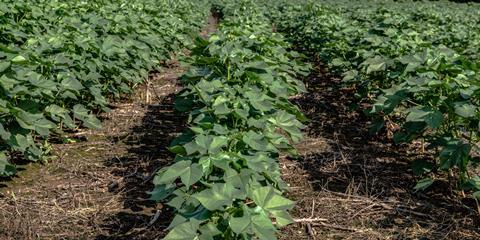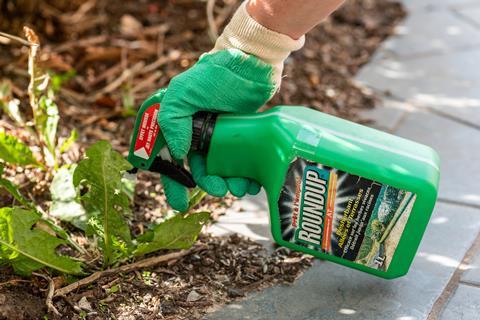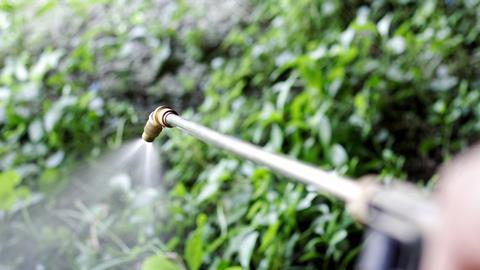Meera Senthilingam
This week, a compound to remember. Brian Clegg…
Brian Clegg
Unless you work in agriculture, a weedkiller is just a weedkiller, and it’s all pretty academic what the compound involved is. But one or two have escaped obscurity and lodged as a name in the collective consciousness – none more so than paraquat.
Technically 1,1’-Dimethyl-4,4’-bipyridinium dichloride, paraquat is a relatively simple aromatic organic salt. ‘Para’ the first part of the name, refers to the position of nitrogen in its ring structure, while the second part identifies the nitrogen atoms as ‘quaternary’, having four bonds to carbon and a positive charge. This is a powerful herbicide that acts quickly, stays active for some time and will kill both grasses and broad leaf plants. This destructive characteristic was not discovered until the 1950s – long after the compound was first produced in 1882 – but it did not take long after that for ICI to begin production of paraquat, which soon became a popular favourite as a total herbicide.

One of the reasons for the rapid uptake in agricultural use was that paraquat works particularly well in no-till systems. These are increasingly popular farming methods that don’t use harrows or rotivators to turn the soil in order to kill weeds and produce furrows. Such ‘tilling’ produces a number of problems, from soil erosion to increased contribution to climate change. But without tilling, another approach has to be taken to weed control. Paraquat works on most weeds, acts quickly, locks onto the plants and won’t be washed away by rain. What’s more, it loses reactivity when it comes into contact with soil, so that careful spraying between rows of crops make it ideal for killing off weeds in a no-till field.
As is often the case, this environmentally-based decision is anything but black and white
Paraquat is still used in many parts of the world, particularly under the brand name gramoxone, though it has been banned in the EU since 2007 and can only be applied in the US by licensed operators. This has meant that familiar brandnames like Pathclear that once were based on paraquat have now moved to other herbicides like glyphosate (best known by the trade name Roundup) and the rather sweetly named diflufenican. This is generally fine for domestic use, but causes problems in agriculture, as paraquat is one of the few herbicides that works with plants that have become resistant to glyphosate. The reason for the move away from paraquat is that the compound is unfortunately not just toxic to plants.

Humans and other animals find pure paraquat highly poisonous, so the highest risk tends to come in agricultural use, or when the substance is used intentionally – one of paraquat’s less attractive statistics is that in some parts of the world, a dose of paraquat has frequently been used as a means of committing suicide.
The reason that paraquat is so aggressive is that it interferes with an essential type of reaction – electron transfer. This is a process that is often described as oxidation and reduction, or ‘redox’. Although, as the name suggests, the process often involves a reaction with oxygen, oxidation has come to mean undergoing a reaction where electrons are lost, while reduction involves gaining electrons.
In the redox process electrons may be transferred from one substance to another, and significantly for paraquat, there are plenty of biological functions where electron transfer takes place, notably in life-supporting processes like photosynthesis and respiration. Paraquat is a strong electron acceptor, and interferes with part of the photosynthesis process in plants, taking electrons from a protein called ferredoxin. These electrons are transferred to oxygen, producing the highly reactive superoxide free radical, which consist of a pair of oxygen atoms bonded by a shared pair of electrons.
Superoxides attack fatty acids in the cell membrane, disintegrating the membrane and tissues. The result is that the green parts of the plants desiccate as water escapes from the disrupted membranes and the plant rapidly dies. A similar process causes respiratory problems in animals when ingested. This ability to act effectively as a catalyst for the transfer of electrons means that paraquat is sometimes used in the laboratory in the production of superoxide free radicals.
Although paraquat itself is highly toxic, there is very little residue left on crops and there is no evidence of consumers suffering as a result. Ironically, the US government made a brief attempt in the 1960s to persuade the population otherwise. Paraquat was being used to control illegal cannabis production, and the government claimed that cannabis was unsafe to smoke because of the use of paraquat. In practice, studies showed that there was no clear risk, as paraquat was destroyed when contaminated leaf was smoked.
The world is divided on paraquat. Here is a substance with an outright ban in the EU and yet it is still marketed widely elsewhere. While there is no doubting paraquat’s dark side, we have to acknowledge that over 50 years after first being manufactured, it is still one of the most effective herbicides, particularly for no-till systems. As is often the case, this environmentally-based decision is anything but black and white.
Meera Senthilingam
Science writer Brian Clegg there, with the weed controlling chemistry of paraquat. Next week, what tickles a scientist’s fancy?
Matt Gunther
Richard Feynman once said there was a ‘sleeping dragon’ lying dormant in the bowels of the Los Alamos Laboratory. And there were a few scientists who decided to tickle its tail, with fatal consequences.
Meera Senthilingam
Discover these consequences with Matt Gunther in next week’s Chemistry in its Element. Until then, thank you for listening, I’m Meera Senthilingam.













No comments yet